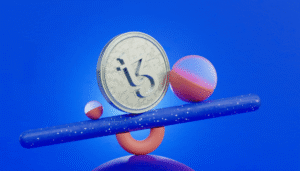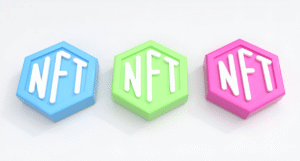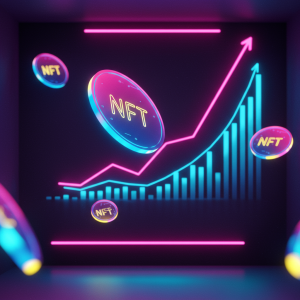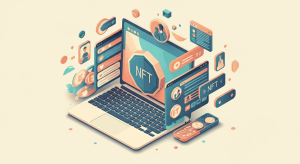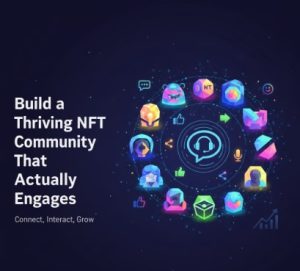Breaking Down Barriers: NFT Fractional Ownership Models

The NFT marketplace continues evolving beyond simple collectibles toward sophisticated investment vehicles. Among these innovations, fractional ownership stands out as a game-changer—democratizing access to high-value digital assets while creating new liquidity channels for creators and collectors alike.
The Evolution of NFT Ownership
Traditional NFT ownership follows a straightforward model: one token, one owner. This structure works perfectly for affordable digital art but creates significant barriers when prices climb into six or seven figures. Consider the famous Beeple artwork that sold for $69 million—an amount beyond reach for most collectors.
Fractional ownership shatters these limitations by splitting a single NFT into multiple shares. Each fraction represents partial ownership of the underlying asset, allowing investors to purchase only what they can afford while still gaining exposure to blue-chip NFTs.
This model draws inspiration from traditional financial instruments like REITs (Real Estate Investment Trusts), which enabled average investors to own shares in premium real estate properties previously accessible only to the wealthy. Similarly, NFT fractionalization opens prestigious digital collections to broader audiences.
Implementation Mechanisms
Implementing fractional ownership requires thoughtful technical architecture. The process typically begins with a standard ERC-721 NFT (the non-fungible token representing the original asset). This token gets locked into a smart contract, which then mints multiple ERC-20 tokens (fungible tokens) representing shares of ownership.
For example, an artist might lock their original artwork NFT into a fractionalization contract that issues 1,000 ERC-20 tokens. Each token might represent 0.1% ownership of the original artwork. These tokens can trade independently on various exchanges, with their combined market capitalization reflecting the perceived value of the underlying NFT.
Several platforms have emerged to facilitate this process. Fractional.art pioneered user-friendly interfaces for creating and trading fractionalized NFTs, while NFTX focuses on creating index funds of fractionalized collections.
For creators interested in implementing these models, our team at NFTMarketo offers comprehensive guidance on selecting the appropriate technical framework based on your specific project requirements.
Governance and Revenue Distribution
Fractional ownership introduces complex questions around governance and revenue distribution. Who decides when to sell the original NFT? How are secondary royalties distributed among fractional owners?
Most implementations address these challenges through DAO (Decentralized Autonomous Organization) structures. Fraction holders receive voting rights proportional to their ownership stake, allowing collective decision-making about the asset’s future. Smart contracts typically establish clear parameters for initiating sale proposals, voting periods, and execution thresholds.
Revenue distribution follows similarly automated patterns. When the underlying NFT generates royalties from secondary market sales, smart contracts automatically distribute these payments to fraction holders according to their ownership percentage. This ensures transparent and immediate value transfer without requiring trusted intermediaries.
Some advanced implementations incorporate time-weighted voting rights or revenue bonuses for long-term holders, encouraging stability in the fractional ownership community.
Market Dynamics and Valuation
Fractional ownership creates fascinating market dynamics often absent in traditional NFT trading. Rather than binary ownership transfers, fractionalized markets demonstrate more nuanced price discovery with continuous trading activity.
The combined market capitalization of all fractions typically exceeds the perceived value of the whole NFT—a phenomenon economists call the “ownership premium.” This premium represents the additional value created through improved liquidity, broader market access, and community formation around shared ownership.
For creators, this translates to potentially higher overall valuations. While selling an NFT outright might fetch a certain price, fractionalization could unlock greater total value by engaging larger investor communities.
Savvy creators increasingly design with fractionalization in mind, embedding governance mechanisms and revenue-sharing structures directly into their original smart contracts rather than retrofitting these capabilities later.
Legal Considerations
Fractional NFT ownership occupies somewhat ambiguous regulatory territory. In some jurisdictions, fractionalized assets might be classified as securities if they pass certain tests like the Howey Test in the United States. This classification brings additional compliance requirements around registration, disclosure, and trading restrictions.
Creators implementing fractional models should work with legal experts familiar with both securities regulations and blockchain technology. The regulatory landscape continues evolving rapidly, with different approaches emerging across global markets.
Some implementations incorporate jurisdiction-specific restrictions or enhanced KYC (Know Your Customer) requirements to navigate regulatory uncertainty while still delivering the benefits of fractional ownership.
Future Directions
The fractional ownership space continues evolving rapidly with several promising trends emerging. Cross-chain fractionalization protocols aim to expand liquidity across multiple blockchain ecosystems rather than confining trading to a single network.
Insurance mechanisms against smart contract failures or oracle manipulation represent another area of active development. These protections could reduce perceived risk and attract more conservative investors to fractional markets.
Perhaps most intriguing are hybrid models combining digital and physical asset ownership. Imagine fractional ownership of an NFT that also confers partial rights to a physical artwork, real estate property, or luxury item—creating bridges between digital and traditional investment markets.
Implementing Your Fractional Strategy
For creators considering fractional ownership models, start by evaluating whether your project truly benefits from this approach. Assets with high unit value, strong community interest, and ongoing revenue potential make ideal candidates.
Technical implementation requires careful consideration of smart contract security, gas efficiency, and user experience. Partnering with established fractionalization platforms often provides the fastest path to market while minimizing security risks.
Community building becomes especially important in fractional models. Engaged co-owners become powerful advocates, trading activity creates ongoing visibility, and collective governance builds sustained interest beyond initial sales.
Fractional ownership represents one of the most significant innovations in the NFT ecosystem—transforming how we value, trade, and engage with digital assets. By thoughtfully implementing these models, creators can expand their collector base while potentially unlocking greater overall value for their work.

